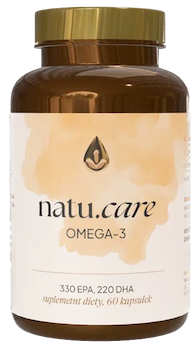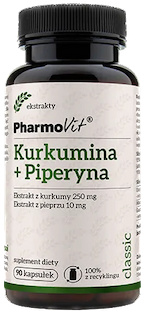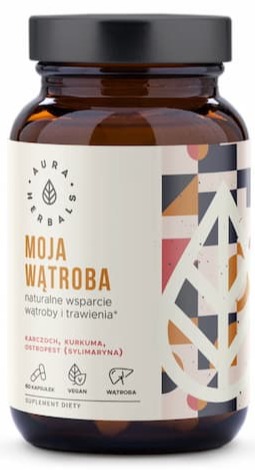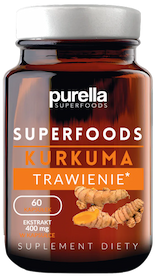Liver - symptoms of diseases, functions + how to take care of it and what to avoid
The liver is responsible for, among other things, the metabolism of fats and proteins. It is one of the most important organs in our body.


Learn more about our editorial process
.

Learn more about our editorial process
.

Learn more about our editorial process
.

Learn more about our editorial process
.
Why you can trust us
Articles on Natu.Care are written based on scientific research, data from government websites and other reliable sources. The texts are written in cooperation with doctors, nutritionists and other health and beauty experts. Articles are reviewed before publication and during significant updates.
.Learn more about our editorial process
.Information about advertisements
Content on Natu.Care may contain links to products from the sale of which we may receive a commission. When creating content, we adhere to high editorial standards and take care to be objective about the products discussed. The presence of affiliate links is not dictated by our partners, and we select the products we review ourselves completely independently.
.Learn more about our terms and Conditions
.The liver is a key organ in the human body. Among other things, it is responsible for digesting food and storing vitamins and minerals. Our body cannot function without it. In this article you will find the most important information about the liver.
.Have you ever wondered how big the liver is? Most people think, that this organ is not one of the largest. Meanwhile, the liver is the second largest (after the skin) organ in our body. It is about the size of a football field and is responsible for numerous functions. Together with Dr Witold Tomaszewski, M.D., we have prepared an overview of the most common liver disease symptoms, information on steatosis and enlargement, as well as tips to help you take care of this valuable organ.
From this article you will learn:
- What the liver is and where it is located .
- What functions the liver has .
- What an enlarged liver can indicate .
- What are the most common liver diseases .
- What symptoms can be associated with liver pain .
- Can the liver regenerate itself .
- What positively affects liver function .
- What a sick liver doesn't like .

Sprawdź, za co pokochały go tysiące klientek Natu.Care Premium Omega-3ᵀᴳ -15% z kodem BLOG15
Natu.Care Omega-3ᵀᴳ Premium
Natu.Care Omega-3ᵀᴳ Premium dla zdrowia serca, mózgu i odporności. Najlepsza przyswajalność. Optymalna dawka 750 mg. Przebadana przez niezależne laboratorium.
Zobacz więcej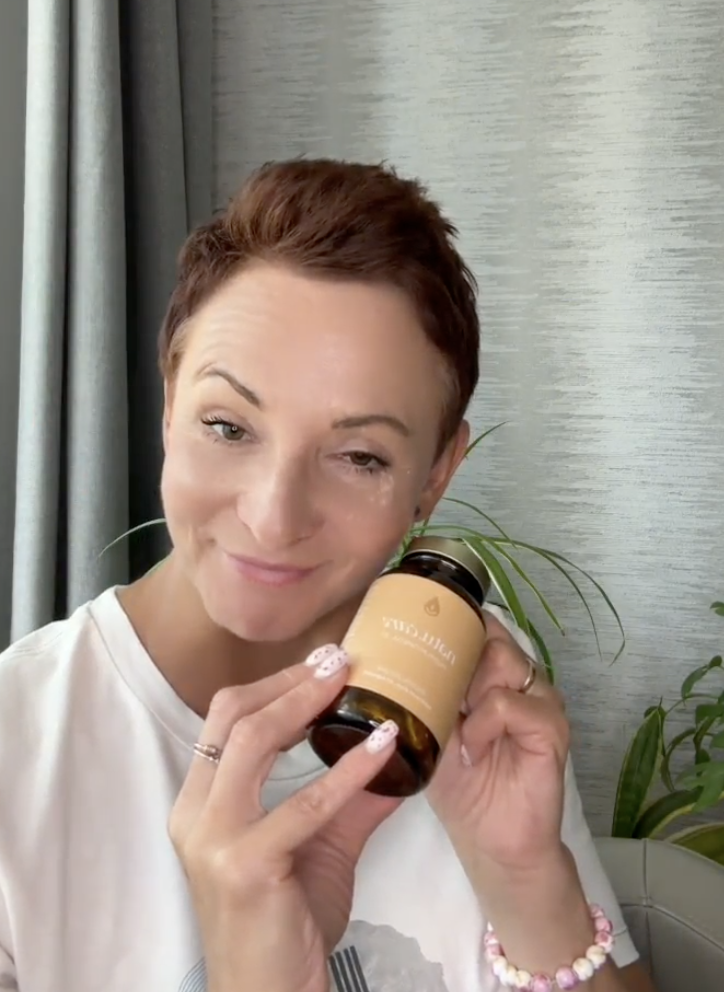
Produkt ma super skład, transparentną etykietę i co dla mnie jest ważne – małe kapsułki do połknięcia. Nie ma też nieprzyjemnego efektu odbijania rybą, który miałam spożywając inne produkty. Widzę znaczną poprawę odporności. Polecam!@Kasia P.
See also:
.What is the liver?
.The liver is one of the most important organsand in our body. It is primarily responsible for regulating glycaemia (blood sugar concentration), removing foreign substances from the bloodstream, and producing essential nutrients. The liver collectively performs more than 500 vital functions.
On the internet, the liver is often referred to as a 'gland'. Although we may call it that - it performs this function - we most often refer to it as an organ or organ, as the liver is part of the digestive system..
 .
.
Witold Tomaszewskidoctor of medical sciences
.Which side is the liver on?"
.The liver is the largest internal organ in the human body. This organ is located just belowand the diaphragm, which separates the thorax from the abdominal cavity - in the upper right side of the abdomen. The liver is located directly above the stomach, right kidney and intestines.
Functions of the liver
.You already know that the liver performs more than half a thousand vital functions. In this section you will find the most important ones. Which liver functions are crucial to us?
Biliary production
.Biliary fluid is an aqueous solutionand that is produced and secreted by the liver. It is accumulated in the gallbladder and is responsible for digestion. Furthermore, it breaks down fatty acidsand, which can later be absorbed into the body through the digestive tract.
Carbohydrate metabolism
.In the metabolism of carbohydratesand the liver takes care of the appropriate concentration of sugar (glucose) in the blood. When the glycaemia (sugar concentration) increases (e.g. after a meal) - the liver metabolises (removes) the sugar from the blood and stores it in the form of glycogen. Conversely, if the glucose concentration is too low - the liver uses glycogen to release sugar into the blood.
Storage of vitamins and minerals
.The liver storesand fat-soluble vitamins (A, D, E and K). It is also responsible for storing one of the B vitamins - vitamin B12. It doesn't stop there, the liver storesand also stores valuable minerals - iron and copper.
Would you like to learn more about fat-soluble vitamins? Take a look at these articles:
What other functions does theand liver perform?
- Regulates the amount of blood in the body.
- Supports immune function.
- Filters the blood and removes dangerous substances from the bloodstream (alcohol, drugs). .
- Regulates the concentration of amino acids in the body. .
- Decomposes old or damaged blood cells. .
- Along with vitamin K, it produces the proteins necessary for the blood clotting process.
Enlarged liver
.An enlarged liver (hepatomegaly) usually means that this organ is swollenand. This indicates a developing disease that is causing the organ to enlarge. Sometimes, however, an enlarged liver can be a symptom of other conditions, such as heart disease.
Liver enlargement is most commonly caused by:
.- inflammation (response to infection), .
- excessively accumulated fat, .
- tumours (benign or malignant), .
- congestion of blood vessels or blockages or clots in them, .
Suspecting liver enlargement in yourself? Make an appointment to see your doctor.
Symptoms
.The vast majority of us will not be able to determine on our own whether the liver is enlarged. However, we can distinguish several symptoms that indicate this condition.
Symptomsand of an enlarged liver:
- gastrointestinal bloating or a feeling of fullness in the abdomen, .
- pain in the upper right side of the abdomen, .
- fatigue, .
- nausea, .
- lack of appetite, .
- light stool, .
Is it dangerous?
.An enlarged liver can be a sign of a dangerous disease or just a warning that something bad is happening in our body. The most important thing is to see a doctor as soon as possible for a diagnosis. An enlarged liver may or may not be very dangerous.
.Diseases that most commonly cause liver enlargement are:
.- acute or chronic inflammation associated with excessive alcohol consumption, .
- toxic inflammation, .
- viral inflammation, .
- fatty liver disease, .
- infectious mononucleosis, .
Please note!
.Remember that an enlarged liver can also herald more serious conditions, such as a developing cancerous process. If you feel that something wrong is happening to your body, see your doctor immediately.
Please note.
Liver cirrhosis
.Marrhosis of the liver is an advanced stage of fibrosisand of this organ. It is most often caused by alcoholism, overweight or viral inflammation. When the liver is damaged - for example due to excessive alcohol consumption - it attempts to regenerate itself.
In this process - if it has been prolonged - so-called scar tissue is formed. As cirrhosis progresses, more and more of the aforementioned tissue appears. This results in significantly impaired liver function. Advanced cirrhosis may even result in death.
.The liver has a high regenerative capacity. When hepatocytes (the cells that make up the liver) are damaged-for example, due to excessive alcohol consumption-the organ is able to rebuild them..
 .
.
Witold Tomaszewskidoctor of medical sciences
.Causes
.In addition to being overweight, chronic alcoholism or viral hepatitis, cirrhosis can also be caused by other conditions or diseases.
Other causesand cirrhosis:
- fat accumulating in the liver, .
- excess iron in the body (haemochromatosis), .
- diabetes, .
- too much copper in the liver (Wilson's disease), .
- mucoviscidosis, .
- genetic disorders (e.g. Alagille syndrome), .
- autoimmune hepatitis, .
- atresia of the biliary tract (fusion of the bile ducts), .
Cirrhosis can also lead to hepatitis caused by hepatitis B or C..
 .
.
Witold Tomaszewskidoctor of medical sciences
.Symptoms
.Marrhosis of the liver is very dangerous, but in its early stages it usually does not produce obvious symptoms. However, there are a few symptoms that should make us turn on the red light.
Symptomsandof cirrhosis:
.- loss of appetite, .
- nausea, .
- fatigue, .
- unexplained weight loss,
- a feeling of being unconscious.
- redness or yellow tinting of the skin,
- swollen skin.
- swelling of legs, feet or ankles,
- swollen legs, feet or ankles.
- ascites, .
- insomnia, .
- loss of sexual desire in men, .
Note!
.These symptoms may or may not be associated with cirrhosis. If you feel that there is something wrong with your body, please seek medical advice immediately.
Can cirrhosis liver damage be reversed?
.No, the liver damage that is caused by cirrhosis most often cannot be reversed. However, if the condition is diagnosed early enough, the damage can be reduced. However, the possibility of reversing them is rare.
.How to prevent?
.Like most conditions, cirrhosis can be prevented, by taking the right steps. Which ones?
- Avoid alcohol if you have liver problems. People who have a diseased liver should avoid alcohol like the plague. Healthy people shouldn't abuse alcoholic drinks either - it reduces the risk of cirrhosis.
- Stay on a healthy diet. A diet rich in fruit, vegetables, whole grains and protein is the key to overall health and preventing cirrhosis.
- Maintain an appropriate weight. Excess body fat increases your risk of developing cirrhosis. Adequate weight will help you feel better and reduce the likelihood of cirrhosis. .
- Lower your risk of hepatitis. Don't have unprotected sex and don't share needles with others - if you are taking any substances intravenously. The needle should always be sterile. If you have the option - ask your doctor for a hepatitis vaccination. .
What leads to liver disease?
.Hepatic diseases can be caused by a variety of factors. What are the most common causes of problems with this gland?
.Hepatic disease can result from:
- Viral infections. These lead to, among other things, hepatitis A, B or C.
- Hepatitis A, B or C.
- Problems with the immune system. The most common autoimmune liver diseases are primary biliary cholangitis (PBC) and autoimmune hepatitis.
- The most common autoimmune liver diseases are the following.
- Hereditary diseases. Hereditary liver disorders include haemochromatosis or Wilson's disease, among others.
- Hereditary disorders of the liver include haemochromatosis or Wilson's disease.
- Cancer. An excessive number of abnormal cells in the liver can lead to the development of tumours. These can be benign or malignant (liver cancer).
- Inappropriate lifestyle. Alcohol abuse can lead to steatohepatitis. Non-alcoholic fatty liver disease (NAFLD), on the other hand, is most often caused by too much fat consumption.
- Terry nails - white, dulland nails except for a thin pink or brown stripe at their tip, .
- leukonychia - vitiligo of the nails, .
- onychiasis - detachment of the nail plate from the nail bed, .
- dystrophic nails - curved, hooked appearance of the nails, .
- abdominal pain or swelling, .
- chronic fatigue, .
- nausea, .
- vomiting, .
- disorientation, .
- insomnia, .
- loss of appetite, .
- fever, .
- unexplained weight loss, .
- easy bruising, .
- nausea, .
- unpleasant breath, .
- fruits, .
- vegetables, .
- proteins (poultry, fish, legumes), .
- nuts, .
- vomiting, .
- nausea, .
- headaches, .
- anxiety, .
- increased heart rate, .
- disorientation, .
- irritability, .
- anxiety, .
- increased blood pressure, .
- excessive sweating, .
- increased energy, .
- cleaner skin, .
- improved mental state, .
- improved bowel function, .
- fighting of internal inflammation, .
- recovery of a healthy weight, .
- oatmeal, .
- broccoli, .
- green tea, .
- monds, .
- spinach, .
- cauliflower, .
- brown Brussels sprouts, .
- cabbage, .
- grapefruit, .
- garlic, .
- olive oil, .
- blueberries, .
- sugar, .
- overweight, .
- sweet fizzy drinks, .
- harmful supplements (always advise your doctor before starting supplements!) .
- high cholesterol levels, .
- Drink alcohol in moderation. Everything is for humans, however alcohol is the liver's biggest enemy. If you choose to drink alcoholic beverages - do so in moderation.
- Drink alcohol in moderation.
- Vaccinate yourself. If you have the opportunity, consult your doctor and get vaccinated against hepatitis A or B.
- Stay on a balanced diet. A proper diet, rich in vegetables and fruit (and low in animal fats), is the key to a healthy body and spirit. It not only supports the liver - it has a positive effect on the whole body. If you have the opportunity, contact a nutritionist who will prepare a balanced diet for you. .
- Maintain an appropriate weight. Obesity and excess fat in the liver leads to many conditions e.g. fatty liver. .
- Avoid risky activities. Always use a condom during sex. If you want a tattoo or body piercing - be picky about the cleanliness of the salon. Do not share needles while taking intravenous drugs. .
- Care for hygiene. Always wash your hands thoroughly before preparing food or eating. When you travel (especially in developing countries), only use bottled water for drinking or washing your hands or teeth. .
- Do not use medicines on your own. Always take prescription medicines as prescribed by your doctor. Over-the-counter preparations or supplements, on the other hand, should be dosed in accordance with the manufacturer's instructions - it is also worth consulting a specialist beforehand.
- Do not take medicines on your own.
- Avoid contact with other people's blood. Improper cleansing of wounds or body fluids can result in infection with viral hepatitis.
- Avoid contact with other people's blood.
- Protect your skin. When using dangerous, toxic chemicals always wear gloves, long sleeves, a mask and appropriate headgear. Take care that these chemicals are not absorbed by your skin. .
- The liver is one of the most vital organs in our body - it is located in the upper right side of the abdomen.
- The liver is one of the most important organs in our body.
- The most important functions of the liver are the production of bile, the metabolism of carbohydrates, and the storage of vitamins and minerals.
- The liver is the most important organ in the body.
- An enlarged liver most often signifies swelling of this organ and may or may not herald a serious disease.
- Marrhosis of the liver is a dangerous condition that is most often caused by alcoholism, overweight or viral inflammation. .
- Diseases of the liver are caused by viral infections, immune system problems or cancer, among other things.
- A bitter aftertaste in the mouth, dark urine or skin changes may indicate liver disease. .
- The liver can regenerate. .
- The work of the liver is supported by, among others, cloves, ginger and honey. .
- Hepatic problems can be aggravated by, among other things, alcohol, cigarettes or stress. .
- Hepatic diseases can be prevented by, among other things, moderate alcohol consumption, a proper diet and vaccinations.
- swelling on the body - joints, legs, hands, face, and consequently ascites, which is most often the result of cirrhosis or hepatic steatosis; .
- change in urine and stool colour; .
- skin rash; .
- digestive problems;
- hepatic fatigue.
- variance of mood;
- increase in the blood count;
- increase in the liver
- enlargement of the liver (hepatomegaly);
- loss of appetite;
- lack of appetite.
- loss of appetite and reduction in body weight;
- loss of appetite.
- yellowing (skin and eye whites); .
- a detailed medical history; .
- physical (palpation) examinations; .
- imaging examinations - e.g. liver and abdominal ultrasound, biopsy or elastography, CT scan, MRI or fibroscan; .
- laboratory tests, i.e. blood morphology and so-called liver tests. .
- follow a so-called liver diet or add to your menu soya, cruciferous vegetables (e.g. cabbage, broccoli, cauliflower and Brussels sprouts), coffee, beetroot or oatmeal and rooibos tea, among others; .
- avoid alcohol and toxins - especially cigarette smoke or medications that stress the liver; .
- increase regular physical activity; .
- do regular checkups; .
- start conscious supplementation - after consulting your doctor or nutritionist; .
- chamomile infusion;
- thistle infusion
- napar of milk thistle; .
- beetroot infusion with lemon and water;
- beetroot vapour.
- an oatmeal brew; .
- beef decoction; .
- beetroot drink with turmeric, cinnamon and lemon; .
Remember that the liver diseases described above are only a few of the most common ones. This organ is very complex, so problems with its function can be associated with many other conditions.
Symptoms of a diseased liver
.Hepatic pain is often associated with unusual additional symptoms. Which symptoms should particularly raise our concern?
Bitter aftertaste.
Bitter aftertaste in the mouth
.A bitter taste in the mouth is a symptom that can signal liver problems. It most often heralds hepatitis Band. This is a dangerous condition leading to cirrhosis or liver cancer and even death. If you suspect it in yourself, contact your doctor immediately.
Dark urine
.Amber, dark orange or brown urineand can be a sign of liver disease. Its abnormal colour is linked to the accumulation of bilirubin in the body (the yellow pigment), as the liver is unable to break it down.
Dermal lesions
.Cutaneous lesions can be indicative of many diseases - including liver problemsand. The most common symptom that can herald liver disease is itching. Diseases of this gland are also manifested by hemangiomas, palmar erythema, jaundice or skin discolouration.
Interesting facts
Hepatic spots are patches of darker skin. They are most often between 0.25 and 1 cm in diameter and appear on the face, hands or arms. Contrary to their name, they have nothing to do with liver disease. Liver spots are caused by excessive UV radiation.
Waking up between 1 and 3am
.The body cleanses itself most intensively of toxins between 1 and 3 am. As you already know, the liver is responsible for this process. If we often wake upand at this hour, we can assume that the liver is having difficulty removing toxins. It is not uncommon that this will be indicative of problems with this organ.
Sleepiness during the day or an abnormal circadian rhythm can also be indicative of liver problems.
Changes on nails
.Changes on the nails often, but not alwaysand indicate liver disease. They are most commonly associated with cirrhosis. Terry's nails, leukonychia, onycholysis or dystrophic nails, among others, have been observed in people with this condition.
What are the symptoms of the aforementioned lesions?
.Not unusual symptoms of a diseased liver
.The liver is an incredibly complex organ, so the above symptoms are just a drop in the ocean of what could herald serious problems with this gland.
Other symptoms of a diseased liver are:
Caution!
.Remember that all of the above symptoms may or may not herald serious health problems. If you are experiencing any of the symptoms, the most important thing is to see a doctor as soon as possible. A specialist will make a diagnosis and provide you with the appropriate help.
Does the liver regenerate?
.Yes, the liver has, unique among organsand the ability to regenerate itself after damage. Even when 90% of the liver is destroyed, it can 'grow back' and return to its original state over time.
Regeneration time is individual, but according to Dr Witold Tomaszewski, MD, dysfunction or damage to 50% of the liver parenchyma can resolve in as little as 30 daysand if the causative factor(s) are eliminated.
How to regenerate the liver
.Liver regeneration is an individual issue - depending on the degree of damage to the liver and the cause. It is therefore advisable to seek medical advice on this matter. However, if the damage is small, it is possible that the right diet, supplements (e.g. liver tablets) or medication will do the job.
Product description
The dietary supplement contains omega-3ᵀᴳ, or omega-3 acids in the form of trójglyceridesów. Scientific studies suggest that this form of fatty acidsós up to 2 times better absorbed than the estersós present in many dietary supplements on the market. This means that you are assured of their effectiveness and of supplying yourself with valuable omega acids.
Fatty acids omega-3 are derived from wild anchovy oil. It is a rich source of healthy fats that are essential for the health of the cardiovascular, immune and nervous systems, as well as the proper function of vision, joints muscles.
Scientific research suggests that wild anchovies are a good source of healthy fats.
Scientific research also suggests that an adequate intake of omega-3 fatty acidsós protects against and supports the treatment of depression and anxiety disorders. In addition, omega-3s influence the hydration and appearance of the skinóry and support healthy sleep.
.
The formula contains a total of 750 mg of EPA+DHA acidsós, which is three times higher than the recommended minimum of 250 mg for the Polish population. Omega-3 TG Premium has studies indicating that its TOTOX is 9, which is a very good result.
Supplementation of omega-3 fatty acidsóis recommended for anyone who does not eat 1–2 portions (approximately 300 g) of oily fish per week. Children during growth, seniors, physically active people, vegans and vegetarians, as well as patients undergoing cardiovascular treatment and prevention of heart disease also have an increased need.
Pros and cons
The dietary supplement contains omega-3ᵀᴳ, or omega-3 acids in the form of trójglyceridesów. Scientific studies suggest that this form of fatty acidsós up to 2 times better absorbed than the estersós present in many dietary supplements on the market. This means that you are assured of their effectiveness and of supplying yourself with valuable omega acids.
Fatty acids omega-3 are derived from wild anchovy oil. It is a rich source of healthy fats that are essential for the health of the cardiovascular, immune and nervous systems, as well as the proper function of vision, joints muscles.
Scientific research suggests that wild anchovies are a good source of healthy fats.
Scientific research also suggests that an adequate intake of omega-3 fatty acidsós protects against and supports the treatment of depression and anxiety disorders. In addition, omega-3s influence the hydration and appearance of the skinóry and support healthy sleep.
.
The formula contains a total of 750 mg of EPA+DHA acidsós, which is three times higher than the recommended minimum of 250 mg for the Polish population. Omega-3 TG Premium has studies indicating that its TOTOX is 9, which is a very good result.
Supplementation of omega-3 fatty acidsóis recommended for anyone who does not eat 1–2 portions (approximately 300 g) of oily fish per week. Children during growth, seniors, physically active people, vegans and vegetarians, as well as patients undergoing cardiovascular treatment and prevention of heart disease also have an increased need.
Additional information
The dietary supplement contains omega-3ᵀᴳ, or omega-3 acids in the form of trójglyceridesów. Scientific studies suggest that this form of fatty acidsós up to 2 times better absorbed than the estersós present in many dietary supplements on the market. This means that you are assured of their effectiveness and of supplying yourself with valuable omega acids.
Fatty acids omega-3 are derived from wild anchovy oil. It is a rich source of healthy fats that are essential for the health of the cardiovascular, immune and nervous systems, as well as the proper function of vision, joints muscles.
Scientific research suggests that wild anchovies are a good source of healthy fats.
Scientific research also suggests that an adequate intake of omega-3 fatty acidsós protects against and supports the treatment of depression and anxiety disorders. In addition, omega-3s influence the hydration and appearance of the skinóry and support healthy sleep.
.
The formula contains a total of 750 mg of EPA+DHA acidsós, which is three times higher than the recommended minimum of 250 mg for the Polish population. Omega-3 TG Premium has studies indicating that its TOTOX is 9, which is a very good result.
Supplementation of omega-3 fatty acidsóis recommended for anyone who does not eat 1–2 portions (approximately 300 g) of oily fish per week. Children during growth, seniors, physically active people, vegans and vegetarians, as well as patients undergoing cardiovascular treatment and prevention of heart disease also have an increased need.
Expert opinion
The dietary supplement contains omega-3ᵀᴳ, or omega-3 acids in the form of trójglyceridesów. Scientific studies suggest that this form of fatty acidsós up to 2 times better absorbed than the estersós present in many dietary supplements on the market. This means that you are assured of their effectiveness and of supplying yourself with valuable omega acids.
Fatty acids omega-3 are derived from wild anchovy oil. It is a rich source of healthy fats that are essential for the health of the cardiovascular, immune and nervous systems, as well as the proper function of vision, joints muscles.
Scientific research suggests that wild anchovies are a good source of healthy fats.
Scientific research also suggests that an adequate intake of omega-3 fatty acidsós protects against and supports the treatment of depression and anxiety disorders. In addition, omega-3s influence the hydration and appearance of the skinóry and support healthy sleep.
.
The formula contains a total of 750 mg of EPA+DHA acidsós, which is three times higher than the recommended minimum of 250 mg for the Polish population. Omega-3 TG Premium has studies indicating that its TOTOX is 9, which is a very good result.
Supplementation of omega-3 fatty acidsóis recommended for anyone who does not eat 1–2 portions (approximately 300 g) of oily fish per week. Children during growth, seniors, physically active people, vegans and vegetarians, as well as patients undergoing cardiovascular treatment and prevention of heart disease also have an increased need.
Product description
The dietary supplement contains high-quality fatty acids omega-3 from anchovy oil. It is a naturally rich source of healthy fats that are essential for cardiovascular, immune and nervous system health, as well as proper function of eyesight, joints muscles.
Scientific research also suggests that an adequate intake of omega-3 fatty acidsós protects against and supports the treatment of depression and anxiety disorders. In addition, omega-3s influence the hydration and appearance of the skinóry and support healthy sleep.
.
The dietary supplement contains 550 mg EPA+DHA per daily serving. This is more than double the official recommendations for the Polish population, whichóre suggesting an intake of at least 250 mg per day.
Supplementation of EPA+DHA is a good way to support healthy sleep.
Supplementation with omega-3 fatty acidsós is advisable if you do not consume 1–2 portions (approx. 300 g) of oily fish per week. There is also an increased need for physically active people, vegans and vegetarians, seniors, children during growth spurts and patients undergoing cardiovascular treatment and prevention of heart disease.
Pros and cons
The dietary supplement contains high-quality fatty acids omega-3 from anchovy oil. It is a naturally rich source of healthy fats that are essential for cardiovascular, immune and nervous system health, as well as proper function of eyesight, joints muscles.
Scientific research also suggests that an adequate intake of omega-3 fatty acidsós protects against and supports the treatment of depression and anxiety disorders. In addition, omega-3s influence the hydration and appearance of the skinóry and support healthy sleep.
.
The dietary supplement contains 550 mg EPA+DHA per daily serving. This is more than double the official recommendations for the Polish population, whichóre suggesting an intake of at least 250 mg per day.
Supplementation of EPA+DHA is a good way to support healthy sleep.
Supplementation with omega-3 fatty acidsós is advisable if you do not consume 1–2 portions (approx. 300 g) of oily fish per week. There is also an increased need for physically active people, vegans and vegetarians, seniors, children during growth spurts and patients undergoing cardiovascular treatment and prevention of heart disease.
Additional information
The dietary supplement contains high-quality fatty acids omega-3 from anchovy oil. It is a naturally rich source of healthy fats that are essential for cardiovascular, immune and nervous system health, as well as proper function of eyesight, joints muscles.
Scientific research also suggests that an adequate intake of omega-3 fatty acidsós protects against and supports the treatment of depression and anxiety disorders. In addition, omega-3s influence the hydration and appearance of the skinóry and support healthy sleep.
.
The dietary supplement contains 550 mg EPA+DHA per daily serving. This is more than double the official recommendations for the Polish population, whichóre suggesting an intake of at least 250 mg per day.
Supplementation of EPA+DHA is a good way to support healthy sleep.
Supplementation with omega-3 fatty acidsós is advisable if you do not consume 1–2 portions (approx. 300 g) of oily fish per week. There is also an increased need for physically active people, vegans and vegetarians, seniors, children during growth spurts and patients undergoing cardiovascular treatment and prevention of heart disease.
Expert opinion
The dietary supplement contains high-quality fatty acids omega-3 from anchovy oil. It is a naturally rich source of healthy fats that are essential for cardiovascular, immune and nervous system health, as well as proper function of eyesight, joints muscles.
Scientific research also suggests that an adequate intake of omega-3 fatty acidsós protects against and supports the treatment of depression and anxiety disorders. In addition, omega-3s influence the hydration and appearance of the skinóry and support healthy sleep.
.
The dietary supplement contains 550 mg EPA+DHA per daily serving. This is more than double the official recommendations for the Polish population, whichóre suggesting an intake of at least 250 mg per day.
Supplementation of EPA+DHA is a good way to support healthy sleep.
Supplementation with omega-3 fatty acidsós is advisable if you do not consume 1–2 portions (approx. 300 g) of oily fish per week. There is also an increased need for physically active people, vegans and vegetarians, seniors, children during growth spurts and patients undergoing cardiovascular treatment and prevention of heart disease.
Product description
Preparation with standardised extracts with herbal ingredients thatóre positively influencing the functioning of the body. Curcumin improves digestion, has an antioxidant effect and supports jointós health. Ginger helps to reduce inflammationólation, has an anti-bioactive effect and is rich in antioxidants. Piperine increases the bioavailability of someós food substances, has anti-inflammatory effects and increases thermogenesis in the body.
Pros and cons
Preparation with standardised extracts with herbal ingredients thatóre positively influencing the functioning of the body. Curcumin improves digestion, has an antioxidant effect and supports jointós health. Ginger helps to reduce inflammationólation, has an anti-bioactive effect and is rich in antioxidants. Piperine increases the bioavailability of someós food substances, has anti-inflammatory effects and increases thermogenesis in the body.
Additional information
Preparation with standardised extracts with herbal ingredients thatóre positively influencing the functioning of the body. Curcumin improves digestion, has an antioxidant effect and supports jointós health. Ginger helps to reduce inflammationólation, has an anti-bioactive effect and is rich in antioxidants. Piperine increases the bioavailability of someós food substances, has anti-inflammatory effects and increases thermogenesis in the body.
Product description
A dietary supplement with berberine, whichóra has a positive effect on sugar-insulin balance and reduces the risk of heart disease. It can support the weight loss process.
Pros and cons
A dietary supplement with berberine, whichóra has a positive effect on sugar-insulin balance and reduces the risk of heart disease. It can support the weight loss process.
Additional information
A dietary supplement with berberine, whichóra has a positive effect on sugar-insulin balance and reduces the risk of heart disease. It can support the weight loss process.
A dietary supplement with berberine, whichóra has a positive effect on sugar-insulin balance and reduces the risk of heart disease. It can support the weight loss process.
Product description
Berberine supports sugar and insulin metabolism, the cardiovascular system and liver function. It may support weight loss, protect the liver and have a positive effect on the gut microbiome.
Pros and cons
Berberine supports sugar and insulin metabolism, the cardiovascular system and liver function. It may support weight loss, protect the liver and have a positive effect on the gut microbiome.
Additional information
Berberine supports sugar and insulin metabolism, the cardiovascular system and liver function. It may support weight loss, protect the liver and have a positive effect on the gut microbiome.
Berberine supports sugar and insulin metabolism, the cardiovascular system and liver function. It may support weight loss, protect the liver and have a positive effect on the gut microbiome.
Pharmovit Curcumin + Piperine
Product description
Curcumin + Piperine Pharmovit is a dietary supplement that supports liver health, fatódigestion, joints and the immune system. Long Oyster Extract provides up to 237.50 mg of curcumin, while Black Pepper Fruit Extract contains 9.50 mg of piperine.
The supplement has no fillers or colourings
.Pros and cons
Curcumin + Piperine Pharmovit is a dietary supplement that supports liver health, fatódigestion, joints and the immune system. Long Oyster Extract provides up to 237.50 mg of curcumin, while Black Pepper Fruit Extract contains 9.50 mg of piperine.
The supplement has no fillers or colourings
.Additional information
Curcumin + Piperine Pharmovit is a dietary supplement that supports liver health, fatódigestion, joints and the immune system. Long Oyster Extract provides up to 237.50 mg of curcumin, while Black Pepper Fruit Extract contains 9.50 mg of piperine.
The supplement has no fillers or colourings
.Curcumin + Piperine Pharmovit is a dietary supplement that supports liver health, fatódigestion, joints and the immune system. Long Oyster Extract provides up to 237.50 mg of curcumin, while Black Pepper Fruit Extract contains 9.50 mg of piperine.
The supplement has no fillers or colourings
.Aura Herbals My Liver
Product description
Aura Herbals My Liver is a dietary supplement thatós composed of a synergistic combination of extractsós and substances to support liver health. It acts as a protective shield thanks to its cleansing, antioxidant and anti-inflammatory properties. By strengthening the cell membranesór, the product facilitates the regeneration of damaged liver tissues, maximising liver performance.
The supplement benefits from a synergy of ingredientsós, such as turmeric and artichoke, which work togetheróly to support liver functions such as detoxification, neutralising free radicalsós, and supporting healthy fat synthesis and transport.
Aura Herbals Moja Wątroba is recommended for people whoóre exposed to daily stress, environmental or food toxins, as well as those seeking to improve overall liver health.
Pros and cons
Aura Herbals My Liver is a dietary supplement thatós composed of a synergistic combination of extractsós and substances to support liver health. It acts as a protective shield thanks to its cleansing, antioxidant and anti-inflammatory properties. By strengthening the cell membranesór, the product facilitates the regeneration of damaged liver tissues, maximising liver performance.
The supplement benefits from a synergy of ingredientsós, such as turmeric and artichoke, which work togetheróly to support liver functions such as detoxification, neutralising free radicalsós, and supporting healthy fat synthesis and transport.
Aura Herbals Moja Wątroba is recommended for people whoóre exposed to daily stress, environmental or food toxins, as well as those seeking to improve overall liver health.
Additional information
Aura Herbals My Liver is a dietary supplement thatós composed of a synergistic combination of extractsós and substances to support liver health. It acts as a protective shield thanks to its cleansing, antioxidant and anti-inflammatory properties. By strengthening the cell membranesór, the product facilitates the regeneration of damaged liver tissues, maximising liver performance.
The supplement benefits from a synergy of ingredientsós, such as turmeric and artichoke, which work togetheróly to support liver functions such as detoxification, neutralising free radicalsós, and supporting healthy fat synthesis and transport.
Aura Herbals Moja Wątroba is recommended for people whoóre exposed to daily stress, environmental or food toxins, as well as those seeking to improve overall liver health.
Product description
A combination of turmeric and black pepper extract, or piperine, in the form of easy-to-swallow, vegan capsules. The product effectively supports liver function and fat digestionós, thus reducing unpleasant gastrointestinal discomforts.
Pros and cons
A combination of turmeric and black pepper extract, or piperine, in the form of easy-to-swallow, vegan capsules. The product effectively supports liver function and fat digestionós, thus reducing unpleasant gastrointestinal discomforts.
Additional information
A combination of turmeric and black pepper extract, or piperine, in the form of easy-to-swallow, vegan capsules. The product effectively supports liver function and fat digestionós, thus reducing unpleasant gastrointestinal discomforts.
A combination of turmeric and black pepper extract, or piperine, in the form of easy-to-swallow, vegan capsules. The product effectively supports liver function and fat digestionós, thus reducing unpleasant gastrointestinal discomforts.
Hepatic diet
.The vast majority of liver disease is caused by excessive alcohol consumption or poor diet. The liver diet aims to support its function and regeneration. It involvesand reducing animal protein intake and proportionately increasing carbohydrates in the diet.
On a liver diet you can eat:
.- .
How do you know if your liver is cleansing?
Cleansing the liver is associated with some not-so-pleasant symptoms. However, if you experience them, you will know that your liver has started to cleanse itself of toxins.
Symptoms that indicate that the liver is cleansing are:
What can be experienced after a liver cleanse?
.Over time, you will begin to feel the positive changes caused by a liver cleanse.
A proper liver cleanse resultsand:
What positively affects liver function?
.Q10 coenzyme
.Coenzyme Q10 is a vitamin-like compound that may support liver function. Research suggests, that it may support the treatment of disorders of this organ. Coenzyme Q10 reduces inflammationand also protects the liver from oxidative damage caused by alcohol.
Cloves
.Cloves may supportand liver function. Research suggests that the eugenol present in cloves may reduce symptoms of cirrhosis and steatosis of the liver. Furthermore, cloves may improve overall liver function.
Red wine
.Alcohol is one of the liver's biggest adversaries. However, studiesand suggest that drinking red wine in moderation may have a positive effect on its function. Nevertheless, further tests are needed to confirm the role of red wine in supporting liver function.
Ginger
.Ginger contains vitamin C, potassium and magnesium, so it exhibits many health-promoting properties. Studiesand suggest that ginger may have a positive effect on the treatment of non-alcoholic steatohepatitis.
Honey
Honey is a natural source of flavanoids. It hasand anti-inflammatory, antioxidant and antimicrobial effects. Studiesand indicate that honey may prevent some liver diseases e.g. biliary obstruction.
Coffee
.Coffee supports liver function and also reduces the riskand of certain diseases. This black beverage may reduce the likelihood of developing cirrhosis or liver fibrosis. What's more, coffee may reduce the risk of liver cancerand.
What other positive effects on liver function ?
.What does a sick liver dislike?
Beer
.Unlike red wine, beer has no positive effect on the liver. What's more, it is an alcohol that damages this organ. Regular drinking of beer can lead to cirrhosisand or fatty liver disease.
How does non-alcoholic beer affect the liver?
.Research suggestsand that drinking non-alcoholic beer by patients with cirrhosis does not adversely affect their condition. However, the reality is that even a little alcohol (which is not uncommon in non-alcoholic beer) can adversely affect the health of liver patients.
Further research is therefore needed to determine what effect non-alcoholic beer has on the liver.
Antidepressants
.Some antidepressants can adversely affect liver function and even cause liver damageand. In some patients, liver problems may occur after just a few days of taking antidepressants. In others, on the other hand, they may not appear until several months later or not at all.
Everyone taking antidepressants should keep their condition under constant review and report any worrying symptoms to their treating doctor immediately.
Cigarettes
.Cigarette smoking damages not only the lungs and blood system - the liver too. Studies suggestand that this action increases the risk of liver steatosis. Moreover, it accelerates the development of hepatocellular carcinoma and the process of liver fibrosis.
Stress
.Stress has been linked to numerous health problems, such asand diabetes, obesity, heart disease, and raised blood pressure. Research suggestsand, that excessive stress both directly and indirectly can damage liver tissue.
Further tests are needed, however, to confirm the effects of stress on the liver.
Stress can also lead to hair loss. Would you like to find out more about this problem?
I invite you to my colleague Nina's article: Hair loss - causes, diagnosis, treatment.
Contraceptive pills
.Long-term use of contraceptive pills can adversely affect liver function. Studies suggestand that the most common complications associated with these drugs are liver adenomas, hepatic vein thrombosis or hepatocellular carcinoma.
Vitamin B3
.Vitamin B3 (niacin) is essential for our body (responsible for, among other things, the construction of DNA). However, niacin is given on prescription, as taking it unwiselyand can result in liver problems. High doses of vitamin B3 can lead to serious and even fatal liver damage.
What else negativelyaffects liver function?and
How to prevent liver disease
.Liver diseases can devastate our bodies. A few simple steps can reduce the risk of their occurrence.
How to preventand liver disease?
- .
See also:
Summary
.You have learned many things about the liver. Now you know how this organ works, what should worry us and how to take care of it.
I would like you to remember some of the most important things:
.FAQ
.What signals does a diseased liver send out?
.The early stages of liver disease may not give visible signals, but the following symptoms should direct you to your doctor:
.How can I tell if I have a diseased liver?
.If you observe symptoms in yourself that suggest liver disease, it is essential to see your doctor to complete the diagnosis.
This will include:
.How does the ketogenic diet affect the liver?
.The ketogenic diet is a menu that involves drastically reducing carbohydrate intake and increasing fat intake. Research suggests that the keto diet may increase the risk of steatosis liver disease.
An enlarged liver in a newborn baby - what to do?
.An enlarged liver in a newborn, or hepatomegaly, can be associated with hepatitis, blood or bile stasis, mononucleosis or fungal, viral, bacterial infections or the presence of parasites, among others. Slight enlargement of the liver is not necessarily a symptom of any disease. In any case, it will be necessary to consult a paediatrician to determine the cause. Diagnosis may require blood morphology or detailed liver tests, as well as liver ultrasound. This is the only way your doctor will select the appropriate treatment.
How to regenerate the liver quickly
.The liver has regenerative properties, but this is not an instantaneous process. Depending on the severity of the damage, liver regeneration can take several weeks to several months.
If you want to speed up liver regeneration, improve liver function and remove toxins, follow the following guidelines:
See for yourself: Liver tablets - suggestions from a pharmacist
.How long does the liver digest alcohol?
.The liver is almost entirely responsible for the metabolism of alcohol - only 2% is excreted unchanged from the body. The time taken by the liver to digest alcohol depends on, among other things, weight, gender, health status and the amount of alcohol consumed.
It is assumed that one standard drink (approximately 40-45 ml of alcohol at 40% strength) is digested over one hour.
What to drink for the liver
.If you want your liver to feel better, drink detoxifying homemade herbs and drinks, which include:
Resources
.See all
.Ali, S., Prasad, R., Mahmood, A., Routray, I., Shinkafi, T. S., Sahin, K., & Kucuk, O. (2014). Eugenol-rich Fraction of Syzygium aromaticum (Clove) Reverses Biochemical and Histopathological Changes in Liver Cirrhosis and Inhibits Hepatic Cell Proliferation. 19(4), 288-300. https://doi.org/10.15430/JCP.2014.19.4.288
Bruyneel, M., & Sersté, T. (2018). Sleep disturbances in patients with liver cirrhosis: Prevalence, impact, and management challenges. Nature and Science of Sleep, 10, 369-375. https://doi.org/10.2147/NSS.S186665
Cells that maintain and repair the liver identified. (2021, March 8). National Institutes of Health (NIH). https://www.nih.gov/news-events/nih-research-matters/cells-maintain-repair-liver-identified
Cirrhosis. (2017, October 20). Nhs.Uk. https://www.nhs.uk/conditions/cirrhosis/
Dogra, S., & Jindal, R. (2011). Cutaneous manifestations of common liver diseases. Journal of Clinical and Experimental Hepatology, 1(3), 177-184. https://doi.org/10.1016/S0973-6883(11)60235-1
Erguder, B. I., Kilicoglu, S. S., Namuslu, M., Kilicoglu, B., Devrim, E., Kismet, K., & Durak, I. (2008). Honey prevents hepatic damage induced by obstruction of the common bile duct. World Journal of Gastroenterology, 14(23), 3729-3732. https://doi.org/10.3748/wjg.14.3729
Estrogens and Oral Contraceptives. (2012). In LiverTox: Clinical and Research Information on Drug-Induced Liver Injury. National Institute of Diabetes and Digestive and Kidney Diseases. http://www.ncbi.nlm.nih.gov/books/NBK548539/
How does the liver work? (2016). In InformedHealth.org [Internet]. Institute for Quality and Efficiency in Health Care (IQWiG). https://www.ncbi.nlm.nih.gov/books/NBK279393/
Hundt, M., Basit, H., & John, S. (2022). Physiology, Bile Secretion. In StatPearls. StatPearls Publishing. http://www.ncbi.nlm.nih.gov/books/NBK470209/
.Liver: Anatomy and Functions. (2019, November 19). https://www.hopkinsmedicine.org/health/conditions-and-diseases/liver-anatomy-and-functions
Long, M. T., Massaro, J. M., Hoffmann, U., Benjamin, E. J., & Naimi, T. S. (2020). Alcohol Use Is Associated With Hepatic Steatosis Among Persons With Presumed Nonalcoholic Fatty Liver Disease. Clinical Gastroenterology and Hepatology, 18(8), 1831-1841.e5. https://doi.org/10.1016/j.cgh.2019.11.022
Mantle, D., & Hargreaves, I. (2019). Coenzyme Q10 and Degenerative Disorders Affecting Longevity: An Overview. Antioxidants, 8(2), Article 2. https://doi.org/10.3390/antiox8020044
Niacin. (2012). In LiverTox: Clinical and Research Information on Drug-Induced Liver Injury. National Institute of Diabetes and Digestive and Kidney Diseases. http://www.ncbi.nlm.nih.gov/books/NBK548176/
Rahimlou, M., Yari, Z., Hekmatdoost, A., Alavian, S. M., & Keshavarz, S. A. (2016). Ginger Supplementation in Nonalcoholic Fatty Liver Disease: A Randomized, Double-Blind, Placebo-Controlled Pilot Study. Hepatitis Monthly, 16(1), Article 1. https://doi.org/10.5812/hepatmon.34897
Roerecke, M., Vafaei, A., Hasan, O. S. M., Chrystoja, B. R., Cruz, M., Lee, R., Neuman, M. G., & Rehm, J. (2019). Alcohol Consumption and Risk of Liver Cirrhosis: A Systematic Review and Meta-Analysis. Official Journal of the American College of Gastroenterology | ACG, 114(10), 1574. https://doi.org/10.14309/ajg.0000000000000340
Shrimal, A., & Gupte, A. A. (2020). Nail Changes in Cirrhosis and Reversal After Adult & Pediatric Liver Transplantation. Journal of Clinical and Experimental Hepatology, 10(5), 531-532. https://doi.org/10.1016/j.jceh.2020.04.005
Snopek, L., Mlcek, J., Sochorova, L., Baron, M., Hlavacova, I., Jurikova, T., Kizek, R., Sedlackova, E., & Sochor, J. (2018). Contribution of Red Wine Consumption to Human Health Protection. Molecules, 23(7), Article 7. https://doi.org/10.3390/molecules23071684
Editorials
Meet the team



Chondroitin helps the joints and other elements of the body.
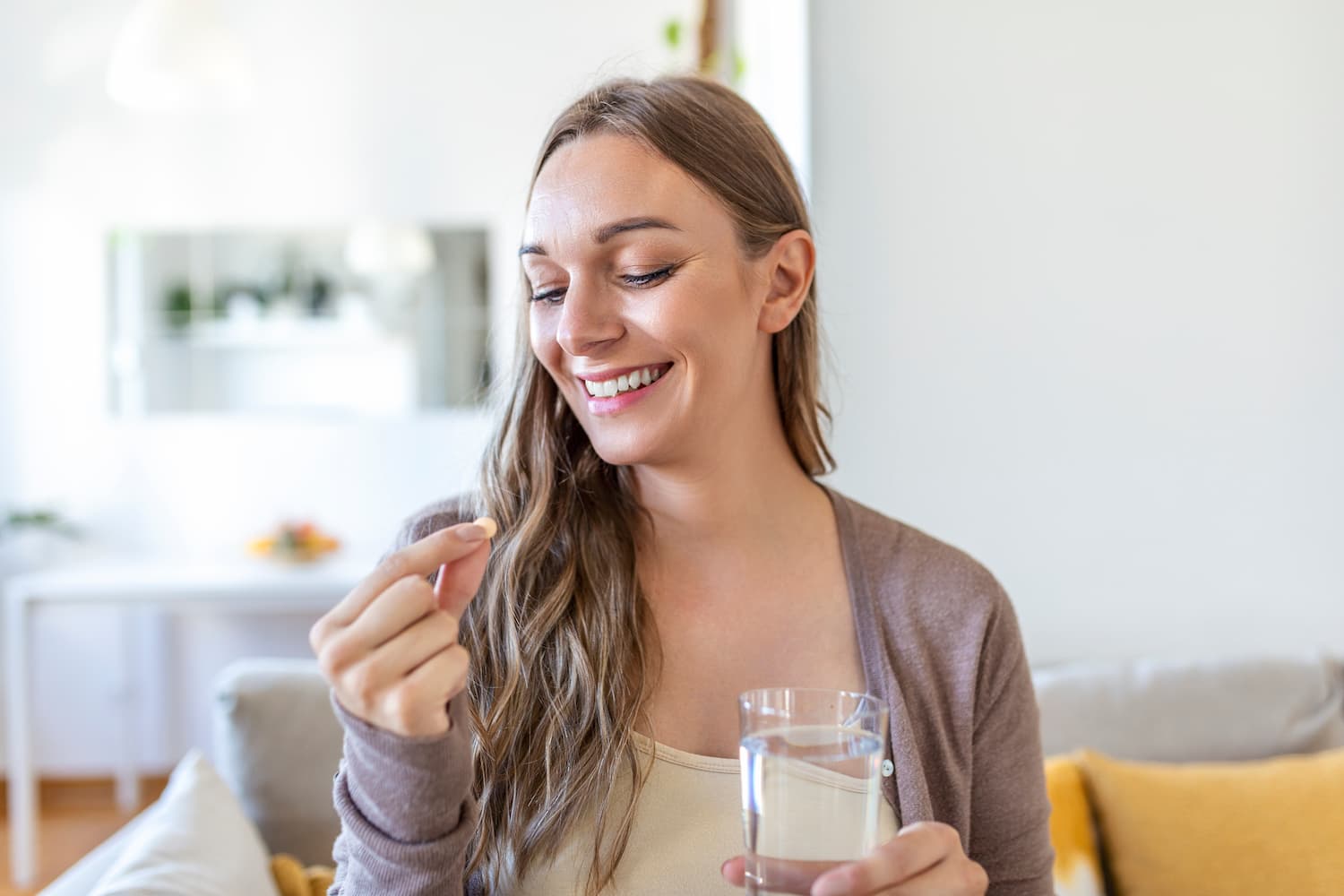
Glutathione is one of the most potent antioxidants for supporting the body's health. Find out how it works and where to get it from.

See why hip joints hurt and how to treat their ailments.

